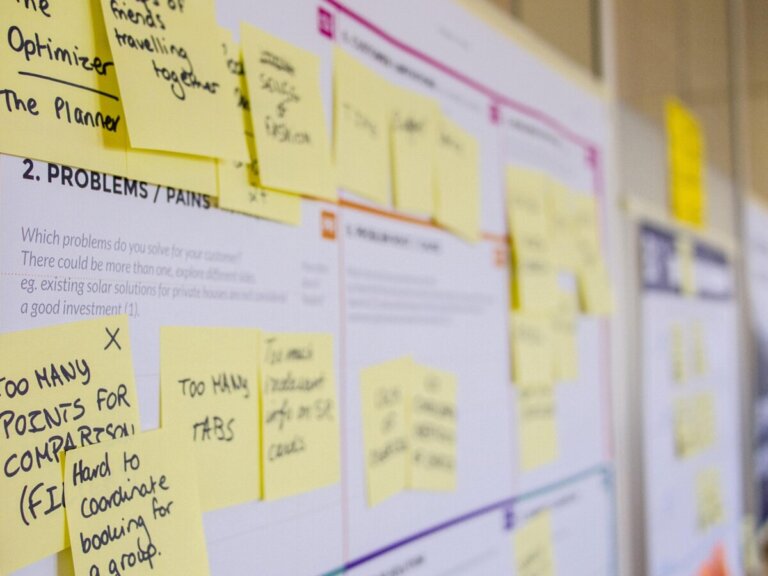
Author: Simone Kohl
· 3 mins read · 1,211 views
Time Management in Project Management
Time management is part of project management. Project managers must ensure that the team is always organized, effective, and on time. After all, time is a scarce resource in any project. However, many other aspects of time management are not directly related to meeting deadlines, but play a crucial role in the success of the project.
What is Time Management in Project Management?
Time Management is the time used for management for project tasks and project activities. Time management requires planning, scheduling, monitoring, and controlling project activities. In addition, time management consists of tools and techniques to optimize time management.
Why is Time Management Important in Project Management?
Each project has a date on which it ends. To meet this date, a schedule is needed in which each team can manage their own time. The. The end date is important to work effectively and focus on the project. Because without an end date, there can be constant delays or problems. For example, you might be too busy to work on certain tasks and so the task just gets pushed further back on the to-do list. Also, you may encounter issues that wouldn’t come up with a timed plan, such as deliveries.
Time management also helps with:
- Subdivision of projects
- Assignment of tasks
- Completing projects within the time constraints
- Successful and efficient completion of the project
In summary, time management is so important because, without effective time management, the project will either not be completed on time or not completed at all.
5 Main Processes in Project Time Management
1. Creating a Well-Defined Project Plan
- Planning is an important part of project management. This is because before the actual tasks can begin, planning of the schedule must first take place.
- One of the project manager’s tasks is to create a project plan. It includes the goals and scope of the project. If this plan is detailed and thorough, it can save the team a lot of time and problems or obstacles.
Questions you should answer here might include the following:
- What software will be used?
- Who is responsible for using the software?
- How will the schedule be reviewed?
- What controls are in place?
2. Communicate with the Stakeholder
- One problem that could occur is delayed communication with, for example, stakeholders. It is best to involve the stakeholders in the project so that they do not lose their priorities and attention to the project.
- This could be done, for example, by sending weekly or monthly e-mails with an overview of the completed tasks. Or, depending on the way of working, Scrum can be used.
3. Define Activities
- Once the schedule is set, you can define your activities for the project. This should also include important milestones.
- To help your team, you can also visually represent the tasks.
4. Determine Dependencies
- Once all tasks have been listed, it’s time to go through the dependencies. This should be done by determining each dependency for each task.
- It is important to carefully define each dependency between tasks so that an accurate plan can be created and delays can be avoided.
5. Sequence Activities
- So at this point, you know all the tasks that need to be done and can now sequence them. Focus on the order in which the tasks of the project will be performed so that the work can be done as efficiently as possible.
6. Estimate Resources and Durations
- Resources include people, i.e., your team. You also need to determine what tools, materials, systems, or budgets can be used and which are relevant to each task.
- You also need to estimate the time it will take to complete the tasks. To do this, you can include experience from past tasks, for example. If there is no data for this, then you can estimate the data with the best and worst values and use the average of them. When estimating, you also need to keep in mind that if a team member is responsible for multiple tasks, this may affect the schedule.
3 Tools for Time Management in Project Management
In recent years, project management has evolved to offer project managers many new options and tools. Here are some tools that can help with time management in project management:
- Kanban Board
- This is a form of visual project management.
- The board allows the team to get an overview of the tasks and the project.
- The tasks are displayed on boards that contain all the important information, such as the responsible person and the due date.
- Time Tracker
- At the end of a project, it can be hard to see the time used when looking at the project dashboard. Therefore, it is important to track the time required to see who spent how much time on which tasks.
- This is because good time tracking for projects helps inaccurate billing and managing the team effectively.
- Collaboration Tools
- Team collaboration is essential in most fields.
- Collaboration tools help teams achieve a common goal. It is designed to help a team work together in a meaningful way.
- Collaboration tools can be understood as anything that a team of at least two people uses to work together.
- The tools come in different options and purposes, but they all have the same goal: to make it easier for the people working together to collaborate.
- Find 15 Collaboration Tools here on our Blog.
Looking for Expert IT Solutions?
Subscribe to Our Newsletter for Exclusive Tips and Updates!
Stay ahead of tech challenges with expert insights delivered straight to your inbox. From solving network issues to enhancing cybersecurity and streamlining software integration, our newsletter offers practical advice and the latest IT trends. Sign up today and let us help you make technology work seamlessly for your business!



Share